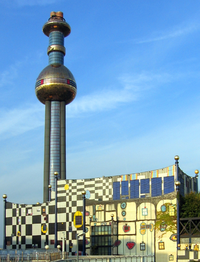
Photo from wikipedia
Abstract The authors detail the creation of a hybrid multi-material structure via the injection of polypropylene (PP) with high ductility into a robust CF/Epoxy thermoset sheet. The purpose of this… Click to show full abstract
Abstract The authors detail the creation of a hybrid multi-material structure via the injection of polypropylene (PP) with high ductility into a robust CF/Epoxy thermoset sheet. The purpose of this hybrid method involves combining the inherent properties of both thermoset and thermoplastic materials in a new hybrid structure while reducing the cycle time and tooling system. Specifically, the effect of pre-heating time, injection temperature, and injection speed rate on the deformation of the prepreg and polymer penetration through prepreg sheets were evaluated. The results of the experimental design indicated that the hybrid structures were manufactured with no penetration present in any combinations of parameters. An inadequate deformation characterized the samples created at a lower injection temperature, and pre-heating time, with insufficient adhesion as a result. High injection speed resulted in enhancing the formability and joinability. Also, the effect of the mentioned process parameters on the curing of prepreg sheet and bending behavior of final hybrid component were investigated through Differential Scanning Calorimetry (DSC), and the Three-point flexural test, respectively. Both DSC and Three-point test results illustrated the increase in pre-heating time, and the injection temperature enhanced the amount of curing and an increase of stiffness on the hybrid component.
Journal Title: Materials Today Communications
Year Published: 2019
Link to full text (if available)
Share on Social Media: Sign Up to like & get
recommendations!